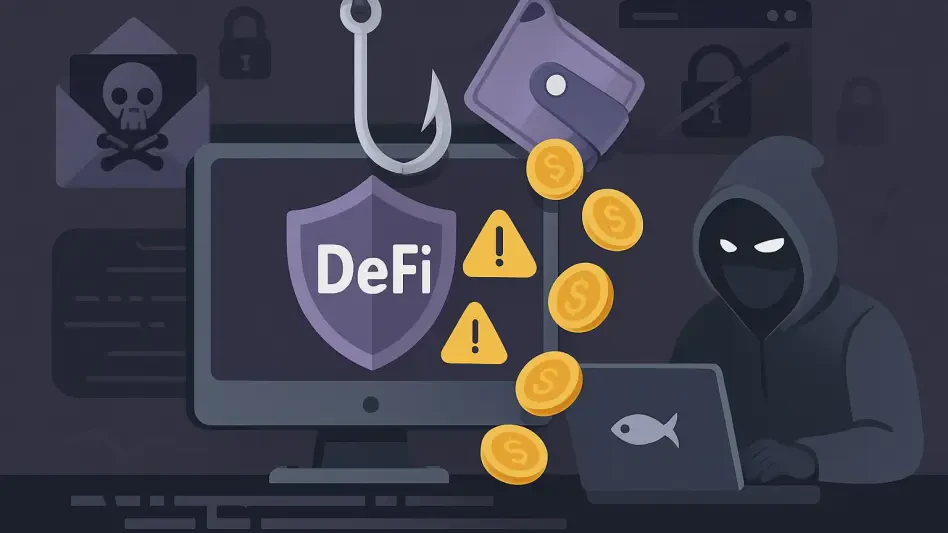The cryptocurrency market is experiencing unprecedented growth, drawing in both investors and cybercriminals. Social engineering, which involves manipulating individuals into divulging confidential information, has become a prominent threat in this space. This article will dissect the various forms of social engineering attacks and provide strategies to help individuals and companies protect their assets.
Understanding Social Engineering
Psychology and Manipulation
Social engineering exploits human psychology rather than technical vulnerabilities. Attackers use emotions like trust, fear, and urgency to deceive victims. Unlike traditional hacking methods, social engineering relies on manipulating human behavior to gain access to sensitive information. Cybercriminals understand that no matter how robust a technical security system may be, it can be circumvented if they can successfully influence an individual’s actions. By playing on human nature, they exploit natural tendencies to trust and respond to perceived authority or emergency, creating a pathway to sensitive data.
One common technique involves creating a sense of urgency that compels the target to act before thinking critically. For instance, an unexpected message from someone impersonating a company executive might demand immediate action due to a supposed security breach. This pressure causes victims to bypass their usual caution in favor of rapid compliance, providing attackers with passwords, financial information, or other confidential details. Recognizing these psychological tactics is crucial for preventing social engineering attacks, as awareness can prompt individuals to pause and scrutinize unexpected requests.
Common Attack Mechanisms
Cybercriminals often impersonate credible entities through emails, phone calls, social media, or in-person interactions. By pretending to be trusted sources, they trick victims into revealing passwords, financial details, and security credentials, bypassing robust technical defenses. An attacker might pose as tech support asking for login credentials to fix a non-existent issue or as a colleague requesting immediate help with an urgent task. These impersonations can range from simple deceptions to highly sophisticated schemes, often leveraging personal details gathered through social media or prior data breaches to enhance their credibility.
Successful social engineering attacks utilize familiar channels and situations to lower the target’s defenses. A seemingly routine IT maintenance request or a social media friend requesting help can provide the perfect cover. The efficacy of these methods lies in their ability to blend into ordinary digital interactions, making them difficult to detect without a heightened sense of suspicion. For organizations, ensuring all staff can recognize and question these interactions is vital for maintaining security integrity.
Types of Social Engineering Attacks
Phishing and Its Variants
Phishing remains a widespread tactic with several forms, each designed to exploit specific vulnerabilities. Email phishing involves fraudulent emails pretending to be from trusted sources, luring recipients into revealing sensitive data or clicking malicious links. These emails often create a sense of urgency or importance, mimicking legitimate communication from banks or service providers. Attackers might deploy logos and official-sounding language to increase their chances of success, making it essential for recipients to verify the authenticity before responding.
Spear phishing targets specific individuals within an organization, utilizing personalized information to appear more convincing. Executives and employees with access to critical data or funds are common targets, as compromising them can yield high rewards. This type of attack often starts with gathering information about the target through social media or other channels, which is then used to craft tailored messages designed to elicit a response. Executives, in particular, are also susceptible to whaling, a variation of spear phishing where highly personalized attacks exploit their authority and access levels.
Business Email Compromise and Other Threats
Business Email Compromise (BEC) is a sophisticated form of social engineering where scammers impersonate executives to manipulate employees into unauthorized transactions. This technique relies heavily on creating a sense of legitimacy and urgency, often exploiting organizational hierarchies to ensure compliance. For instance, an attacker might pose as a CEO directing the finance department to wire funds immediately for a supposed urgent business deal. The perceived authority and immediacy of the request often prevent employees from double-checking the authenticity, leading to significant financial losses.
Pretexting involves creating fabricated scenarios where attackers pretend to be trusted individuals, like colleagues or IT support, to extract confidential information. This attack can be highly convincing as it often uses detailed and plausible stories that appear legitimate and relevant to the victim. An attacker might claim to need access to internal systems to resolve urgent IT problems or simulate a friendly colleague asking for help, leveraging existing trust within the organization. Recognizing these tactics involves questioning unexpected requests and verifying identities through established channels.
Deceptive Tactics
Honeytrap and Love Scams
Honeytrap scams involve fraudsters creating fake online personas to build trust and manipulate victims into disclosing private keys or sending funds. These scams often play out over extended periods, with the attacker gradually gaining the target’s confidence by pretending to share common interests or offering lucrative opportunities. By creating a seemingly genuine relationship, attackers can influence their victims to lower their defenses and comply with requests for financial transactions or confidential details.
Love scams exploit emotional bonds similarly, but with a focus on romantic relationships. Scammers pose as potential romantic partners, establishing intimate connections to manipulate victims into transferring cryptocurrency or money. These fraudulent relationships can become deeply emotional, making it difficult for victims to recognize the deceit. Individuals approached with unexpected romantic interest or financial requests should remain cautious and verify the authenticity of the person they are interacting with, especially in online environments.
Enticement and Diversion
Baiting involves luring victims into compromising their security with enticing offers such as free software downloads or infected devices. Attackers may leave USB drives containing malicious software in public places, hoping that curiosity will lead someone to plug the device into their computer. Alternatively, they might offer free downloads of popular software, which, when installed, infects the user’s system with malware. These tactics rely on the victim’s temptation or perceived gain, turning seemingly harmless actions into significant security breaches.
Quid Pro Quo scams involve scammers offering something valuable in exchange for sensitive information. A common scenario might include promises of free cryptocurrency, exclusive access to trading tools, or substantial returns on investment. Victims enticed by these offers may divulge personal details or transfer funds to accounts controlled by the attackers. Diversion theft further complicates matters by misleading victims into sending funds or sensitive data to incorrect addresses through sophisticated social engineering tactics. For instance, attackers might alter transaction details during a legitimate process, redirecting payments to fraudulent accounts before the victim realizes the deception.
Protection Strategies for Individuals
Practicing Due Diligence
Protecting against social engineering attacks begins with individuals practicing due diligence. Verifying the identities of those requesting sensitive information or actions is a critical first step. Before clicking on links or sharing personal data, individuals should pause and confirm the legitimacy of the request through trusted channels. Contacting the organization directly using known contact details, rather than those provided in suspicious messages, can prevent falling victim to deceitful tactics.
Keeping wallets and credentials secure is equally important. Individuals should never disclose private keys, seed phrases, or login credentials, as legitimate platforms will never request these details. Using strong, unique passwords for different accounts and enabling multi-factor authentication (MFA) adds additional layers of security. Being vigilant about password security, avoiding the reuse of passwords across multiple platforms, and regularly updating credentials can significantly mitigate risks.
Staying Informed and Prepared
Staying informed about current threats and red flags is essential for ongoing protection. Offers that seem too good to be true, urgent financial requests, or overly affectionate messages should all be approached with skepticism. Keeping up with new scams through official announcements, community discussions, and continuous education helps individuals remain a step ahead of cybercriminals. Conducting regular research (Do Your Own Research or DYOR) ensures that individuals are aware of the tactics and can recognize the signs of potential social engineering attacks.
Using secure communication channels, such as encrypted messaging apps, can safeguard sensitive discussions from interception. Verifying claims made by supposed representatives through official channels adds another layer of protection. Regular participation in cybersecurity awareness programs equips individuals with the knowledge and tools they need to identify and respond to social engineering tactics effectively. Continuous learning and vigilance are key components in maintaining security and protecting assets within the cryptocurrency space.
Security Measures for Companies
Strengthening Internal Controls
For companies, implementing strong access controls is crucial in defending against social engineering attacks. Multi-factor authentication (MFA) should be used to add an extra layer of verification for accessing sensitive data. By restricting access to confidential information based on roles and ensuring that employees only have access to the data necessary for their specific job functions, companies can minimize the risk of internal breaches. Regular auditing of access logs and permissions helps in identifying and addressing any discrepancies promptly.
Training employees regularly to recognize various social engineering threats, such as phishing, Business Email Compromise (BEC), and impersonation scams, is vital. Simulated phishing tests can be conducted to evaluate the effectiveness of these training sessions and reinforce the lessons learned. When employees are equipped with the knowledge to identify suspicious activities and know how to respond appropriately, the overall security posture of the organization is strengthened. Constantly updating the training programs ensures that employees remain aware of the latest tactics used by cybercriminals.
Monitoring and Response
The cryptocurrency market is witnessing unprecedented growth, attracting a range of investors and an increasing number of cybercriminals. As the value and popularity of digital currencies soar, so does the interest of those looking to exploit it through various malicious tactics. One of the most significant threats in this space is social engineering, where criminals manipulate individuals into revealing sensitive information. This article will dive into the different types of social engineering attacks that are prevalent in the crypto world, such as phishing, spear phishing, and baiting. It will also discuss ways individuals and companies can safeguard their investments. From understanding how these attacks operate to learning practical steps for prevention, the goal is to equip readers with the knowledge to protect their assets. It’s crucial to stay informed and vigilant, as the tactics of cybercriminals evolve alongside the technology they seek to exploit. Proper education and robust security measures are key to defending against these sophisticated schemes.







